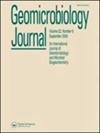Mycoremediation of Iranian Crude Oil Contaminated Soil by Indigenous Fungi Isolates and the Evaluation of Their Bioremediation Ability
IF 2.2
4区 环境科学与生态学
Q3 ENVIRONMENTAL SCIENCES
引用次数: 0
Abstract
Abstract Bioremediation is one of the most effective approaches to eliminate or reduce soil contamination. Samples were collected from petroleum-contaminated soil in Oil Refinery Plant in Isfahan, Iran. The soil samples were cultured and the isolates were identified by polymerase chain reaction method. Total petroleum hydrocarbons assessment and measurement of the absorbance at 420 nm were used to determine the capability of fungi for bioremediation of petroleum hydrocarbons. Five isolates of fungi were purified from petroleum-contaminated soils. The oil degrading fungal isolates were identified as Aspergillus niger, Rhodotorula mucilaginosa, Penicillium sp., Penicillium chrysogenum, and Mucor circinelloides. All isolates had mycoremediation activity among which, Aspergillus niger, Mucor circinelloides, and Penicillium sp. had the highest potential to reduce total petroleum hydrocarbons (85%, 64%, and 53%, respectively) during 3 months. In addition, biosurfactant-producing ability was found only in these three isolates. The A. niger isolate had a high ability in hydrocarbons removal and, the P. chrysogenum isolate had significant ability in biosurfactant production, they can be applied in the bioremediation of contaminated soil in microbial consortia. The use of native microorganisms living in contaminated soils, especially fungi, have a high efficiency in removing contaminants of petroleum hydrocarbons in the soil.土生真菌对伊朗原油污染土壤的真菌修复及其生物修复能力评价
摘要生物修复是消除或减少土壤污染的最有效方法之一。样本是从伊朗伊斯法罕炼油厂的石油污染土壤中采集的。对土壤样品进行培养,并用聚合酶链反应法对分离株进行鉴定。总石油碳氢化合物的评估和420吸光度的测量 利用nm测定真菌对石油烃的生物修复能力。从石油污染的土壤中分离出5株真菌。降解油脂的真菌分离株被鉴定为黑曲霉、粘红酵母、青霉属、产黄青霉和环状毛霉。所有分离株都具有真菌修复活性,其中黑曲霉、环毛霉菌和青霉在3 月。此外,仅在这三个分离株中发现了产生生物表面活性剂的能力。黑曲霉具有较高的脱烃能力,产黄假单胞菌具有显著的生物表面活性剂生产能力,可应用于微生物群落污染土壤的生物修复。使用生活在受污染土壤中的本地微生物,特别是真菌,可以高效地去除土壤中的石油碳氢化合物污染物。
本文章由计算机程序翻译,如有差异,请以英文原文为准。
求助全文
约1分钟内获得全文
求助全文
来源期刊

Geomicrobiology Journal
环境科学-地球科学综合
CiteScore
4.80
自引率
8.70%
发文量
70
审稿时长
3.3 months
期刊介绍:
Geomicrobiology Journal is a unified vehicle for research and review articles in geomicrobiology and microbial biogeochemistry. One or two special issues devoted to specific geomicrobiological topics are published each year. General articles deal with microbial transformations of geologically important minerals and elements, including those that occur in marine and freshwater environments, soils, mineral deposits and rock formations, and the environmental biogeochemical impact of these transformations. In this context, the functions of Bacteria and Archaea, yeasts, filamentous fungi, micro-algae, protists, and their viruses as geochemical agents are examined.
Articles may stress the nature of specific geologically important microorganisms and their activities, or the environmental and geological consequences of geomicrobiological activity.
The Journal covers an array of topics such as:
microbial weathering;
microbial roles in the formation and degradation of specific minerals;
mineralization of organic matter;
petroleum microbiology;
subsurface microbiology;
biofilm form and function, and other interfacial phenomena of geological importance;
biogeochemical cycling of elements;
isotopic fractionation;
paleomicrobiology.
Applied topics such as bioleaching microbiology, geomicrobiological prospecting, and groundwater pollution microbiology are addressed. New methods and techniques applied in geomicrobiological studies are also considered.
 求助内容:
求助内容: 应助结果提醒方式:
应助结果提醒方式:


